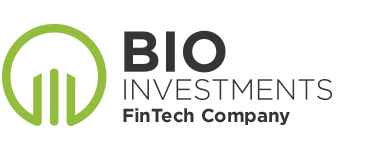Ivan Liljeqvist is an international speaker, software developer and founder of Ivan on Tech. On Ivan’s channel he spreads knowledge about Blockchain technology to hundreds of thousands of viewers. He is known for making the complex simple, the boring interesting and Blockchain entertaining.
Cointelegraph’s Stephen Chase caught up with Ivan at this year’s Blockshow Asia to chat about Blockchaining the world, understanding Bitcoin and making the future better for everyone. Also, Ivan gives a bit of advice on how you can go about getting others involved in the community by giving away some Bitcoin.
CT: Could you tell us a bit about what you do when you’re not here talking to us?
IL: Thank you for having me here. Yes, I run the Ivan on Tech YouTube channel where I talk about Blockchain technology, Bitcoin, Ethereum, the technology behind different Blockchain projects. I do GitHub analyses of different ICOs and of established Blockchain projects as well.
In addition, I run a company called Stockholm Blockchain which is an educational company. We educate companies, organizations and governments about how Blockchain technology can be applied and will be applied so that they can be ready for the changes that are coming.
A cure for Bitcoin blindness
CT: What is your vision of Bitcoin you think people need to understand before investing?
IL: You should really understand the technology and understand the vision before you invest in cryptocurrencies because it is a very volatile market, and if you are not experienced in the technology or the vision it might be easy for you to get scared and to just lose money in this field as an investor. So when I speak about vision, I speak about how it can be used for improving the financial system. Suddenly there are people in many parts of the world who didn’t have any banking services at all and now have. Before, it didn’t matter if you were brilliant, or had a good team, had passion or were smart–it would be hard for you to raise capital. But now, with ICOs and crowdfunding on the Blockchain, it is possible for the first time ever. Understanding how the technology works and how it enables all of these great things in the world is very important. Having that in mind, I think it’s easier to invest in Bitcoin and not be influenced by market volatility.
CT: What are some goals ahead and challenges the community faces in achieving them?
IL: I think that one of the biggest challenges is bringing the community together. We have a lot of crypto debates and Bitcoin discussions on how we should move forward, but in the end it is all about unity. We need to unite the community and move forward together because everything comes down to selling cryptocurrencies to people who don’t really understand cryptocurrencies yet.
The number one goal should be mass adoption. Normal people who are not very into technology or this whole community need to understand that cryptocurrencies are real and what good they can do in the world. We can do that by spreading it around. For example, a drug dealer would not just talk about his drug and how good it is by showing you a bunch of charts. He will just say, try it. And then you become addicted. Similarly, the ease of use of cryptocurrencies brings about realizations of the potential of cryptocurrencies. So, definitely more people should be practically involved. And if you own some Bitcoin, just give ten or twenty dollars to your friend as a crypto Christmas present.
Jobs: How we can weed the garden and at the same time, plant flowers
CT: We hear about how Blockchain could be the end of many jobs, how can it also be used to create new ones?
IL: We can remove many middle-men and make businesses peer-to-peer. If we have smart contracts on the Blockchain, we do not need to have that many middlemen. I think that this portion of the population will need to find something else to do. Many people will have access to capitol, crowd-funding – how many new ideas will be created in parts of the world that couldn’t access capitol – building teams companies… For me, the positive aspects definitely outweigh the negatives. With all technology there are some jobs that will be displaced, new jobs will be created, and there will be some kind of transition period. We will see completely new jobs and more and more people will be able to fulfill their purpose and their vision in life by now being able to use cryptocurrencies as banking services and be a part of the global financial system.
Into the upside down of ICOs: advice from an expert
For developers: Do your homework!
If you’re thinking about an ICO, think about the properties that Blockchain has and the benefits that Blockchain gives you. Those benefits are transparency, decentralization and immutability. If these properties fit the problems you want to solve, go ahead. If you see that the problem you’re solving doesn’t need decentralization, doesn’t need transparency, and doesn’t need immutability, just use a regular relational database. There is no need for a Blockchain in that case.
As an investor, think the same way as well because many projects will try to implement a token, or do an ICO because it’s easy to attract capital. It’s important to think about those things and really see if a project needs Blockchain at all.
For investors: Do your damn homework!
Learn the basics of GitHub, even if you’re not a programmer, just learn how it works so you can go to a GitHub page and see the code of a project. If you’re not a programmer you will not be able to understand it but at least you can get some kind of feeling when you look at the number of commits, when you look at the number of contributors–the frequency of contributors. You can even learn how to look at the actual code and see if it’s just some trivial changes such as name changes or just comments, or if it is actual code that has been produced. Just learn how it works. Always ask yourself do they really need Blockchain?
CT: Thank you so much for joining us and coming out to Cointelegraph Blockshow Asia.
IL: Thank you very much.

